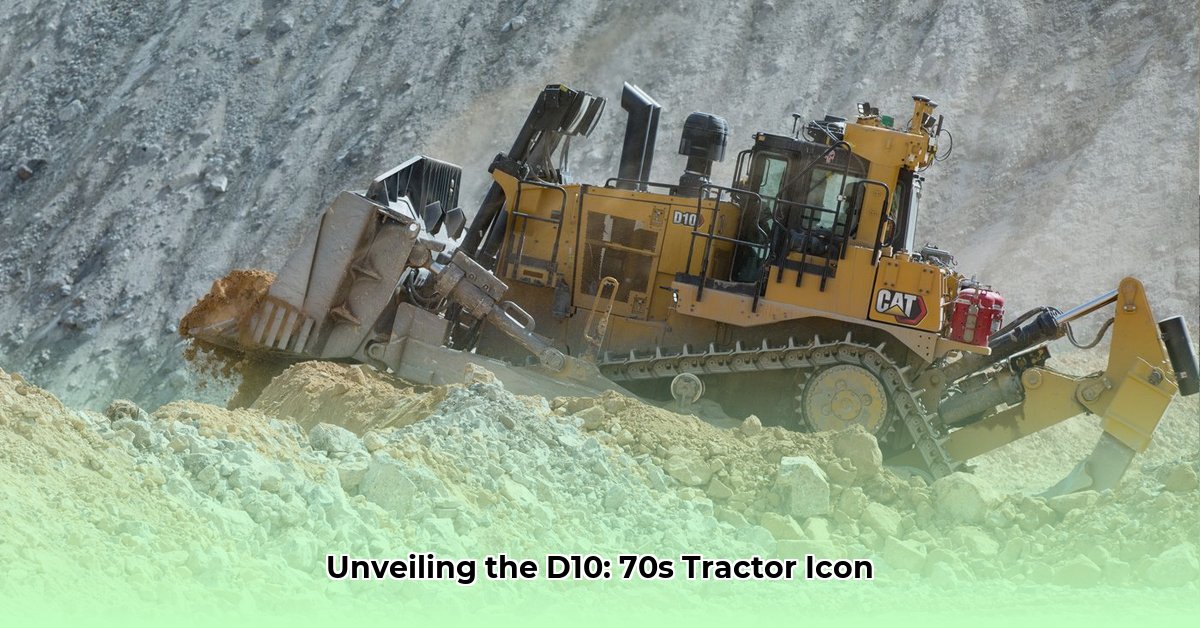
The Caterpillar D10 tractor, introduced in the late 1970s, revolutionized earthmoving. Its 700-horsepower engine significantly outperformed predecessors like the D9H (410 horsepower), reflecting the industry's relentless pursuit of greater efficiency. This power surge placed Caterpillar in a fierce competition with rivals like Komatsu and Fiat-Allis, driving rapid innovation in the heavy equipment sector. But the D10's impact extended beyond sheer power; its unique design features, particularly the elevated drive sprocket system, set a new standard for bulldozer engineering. For more on heavy equipment values, see this useful resource.
The Elevated Drive Sprocket: A Revolutionary Design
The D10's most distinguishing feature was its elevated drive sprocket system. This innovative design, where the drive wheel sits higher than the idler wheel, dramatically improved track tension, minimizing slippage and maximizing operational efficiency. Caterpillar marketed this as SALT (System for Added Life of Track), emphasizing enhanced durability. However, the long-term maintenance implications of this design remain a subject of ongoing discussion among experts. While SALT aimed to reduce track wear, the ultimate cost-effectiveness compared to conventional designs requires further analysis. This highlights the inherent trade-offs between innovative design and long-term maintenance costs. Was the increased efficiency worth the potential long-term expenses? This question remains a fascinating area of study for heavy equipment historians.
The D10's Commercial Success: A Quantifiable Impact
Between 1978 and 1986, nearly 1000 D10 tractors were produced, demonstrating significant market acceptance. This widespread adoption underscores the machine's effectiveness and appeal to construction companies worldwide. However, a comprehensive analysis comparing the D10's performance metrics (such as fuel efficiency, blade capacity, and track lifespan) against competitors like the Fiat-Allis 41-B and Komatsu D455A is needed, to fully determine its competitive advantage. This could reveal how its innovative design translated to tangible benefits such as reduced operational costs or increased productivity. Further research is needed to complete this comparative analysis.
| Feature | D10 Tractor | Fiat-Allis 41-B | Komatsu D455A |
|---|---|---|---|
| Horsepower | 700 | 524 | 620 |
| Blade Capacity | Data Needed | Data Needed | Data Needed |
| Fuel Efficiency | Data Needed | Data Needed | Data Needed |
| Track Life | Data Needed | Data Needed | Data Needed |
Beyond Horsepower: A Lasting Legacy of Innovation
The D10 signifies more than just a powerful machine; it represents a milestone in Caterpillar's engineering history. It demonstrated a commitment to pushing technological boundaries, setting the stage for future advancements. Its eventual replacement by the D11, showcases the ever-increasing pace of innovation in the heavy equipment industry. The D10's legacy helps us understand the interplay between inventive engineering and the dynamic demands of the construction sector. What factors led to its ultimate obsolescence? This question underscores the importance of continuous innovation within a rapidly evolving technological landscape.
Lessons from the D10: Engineering and Practicality
The Caterpillar D10 remains a significant achievement in the history of heavy equipment. Its elevated drive sprocket system, while sparking debate regarding its long-term cost-effectiveness, fueled subsequent design innovations. This case study offers valuable lessons for modern manufacturers, highlighting the crucial balance between groundbreaking designs and practical, cost-effective implementation. How can modern engineering teams balance innovation and practicality in their designs? This is a continually relevant question for the field. Further research into the D10's long-term operational costs and the actual lifespan of its tracks would provide a clearer picture of its overall cost-effectiveness compared to its competitors and help answer this critical question.